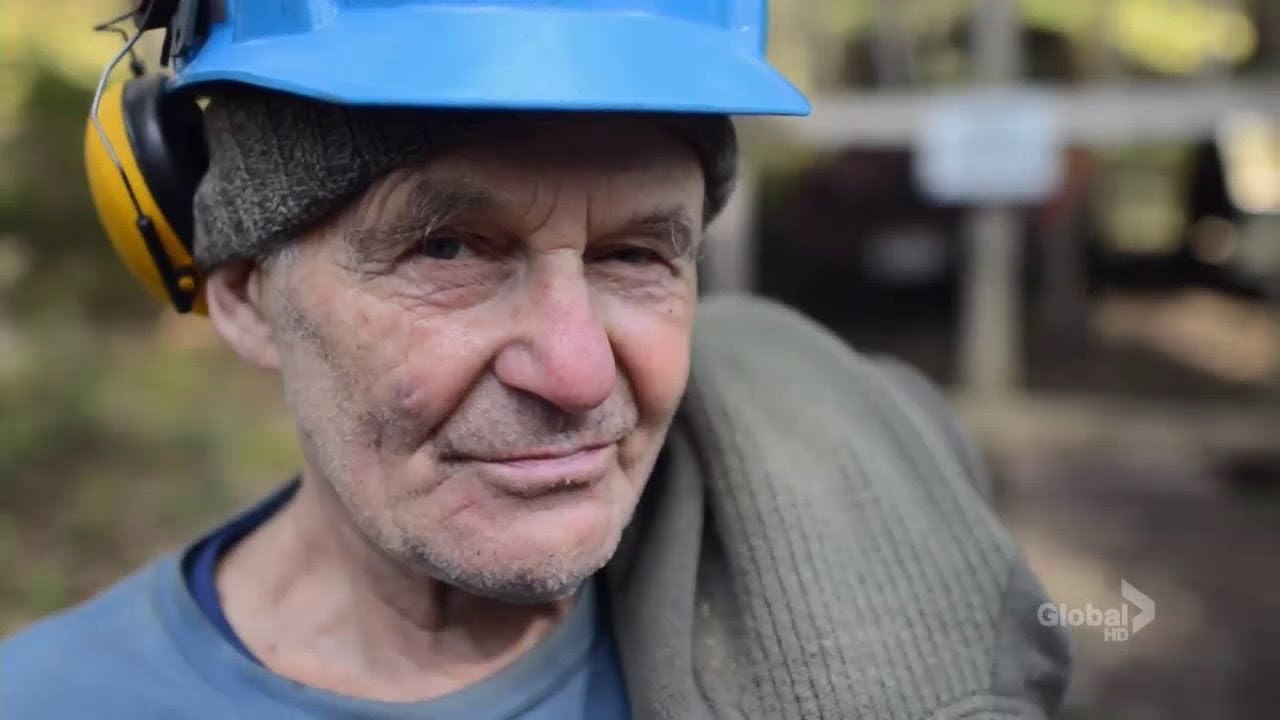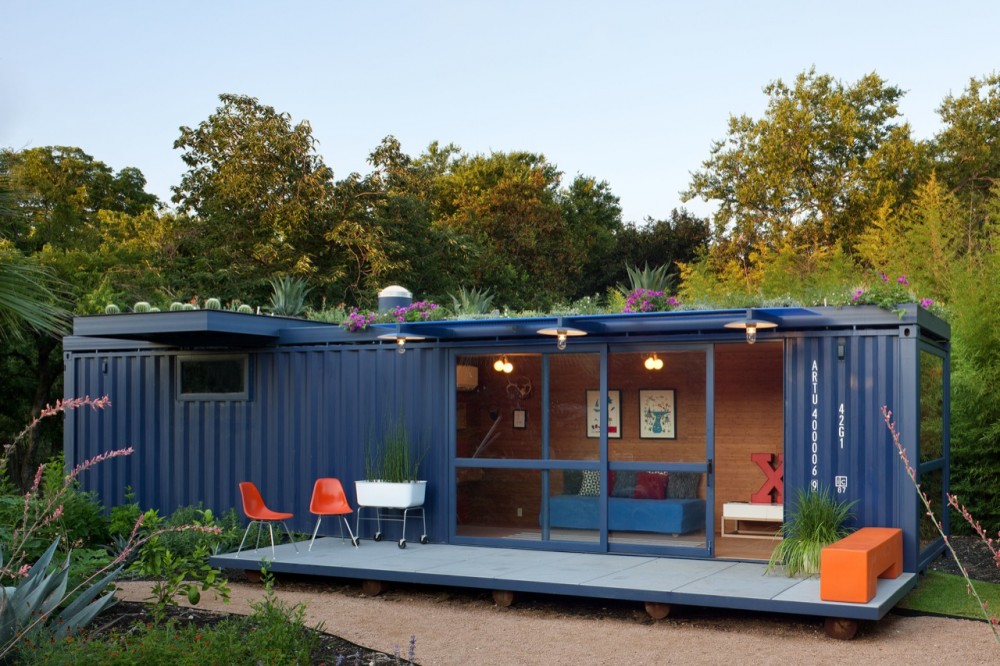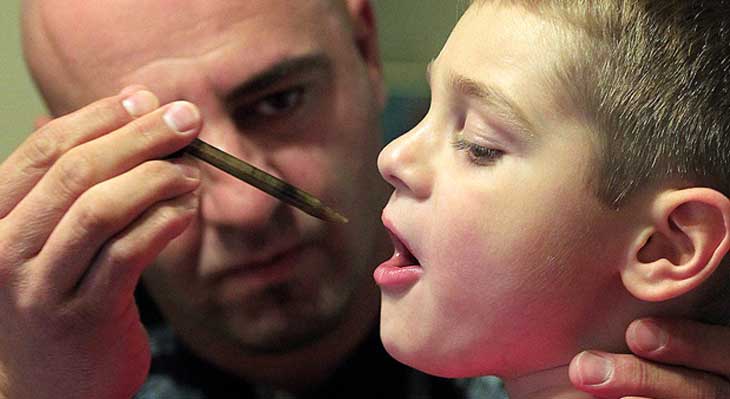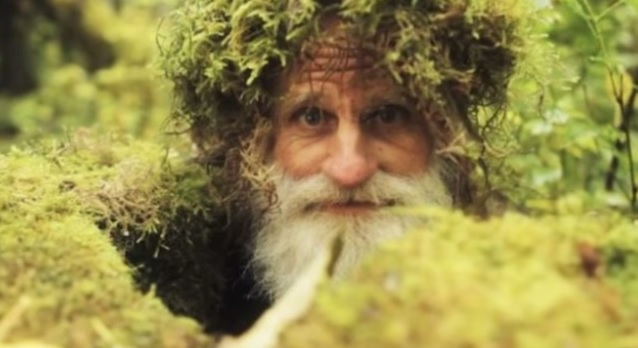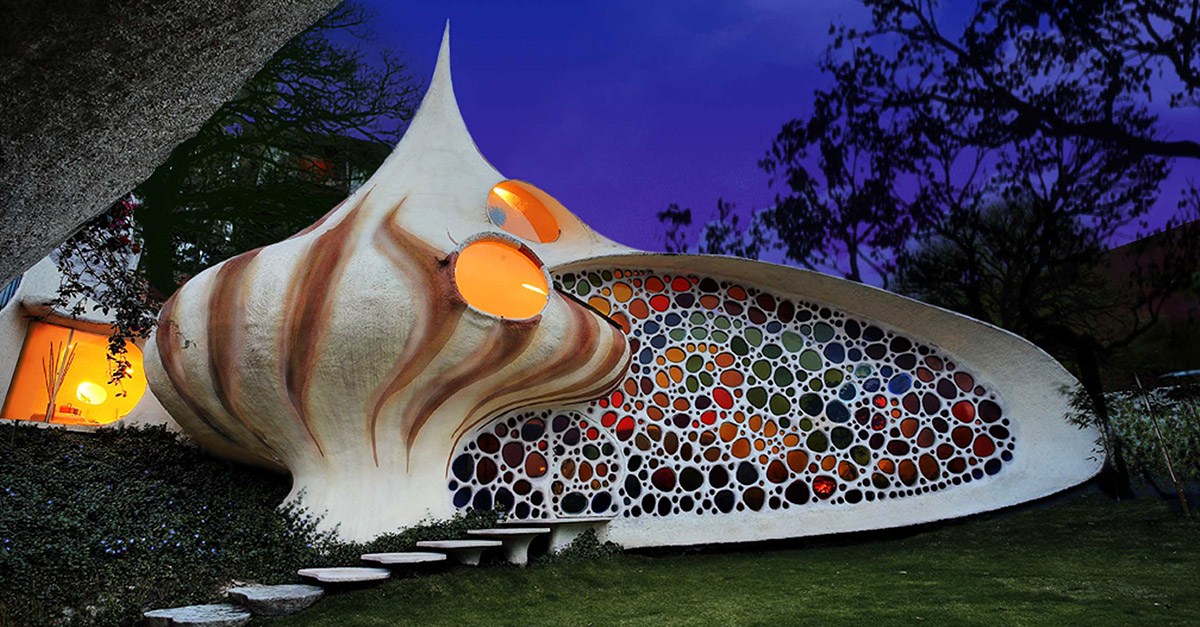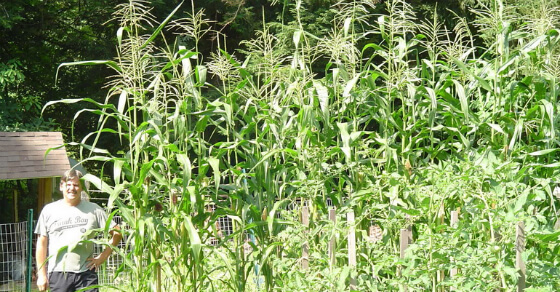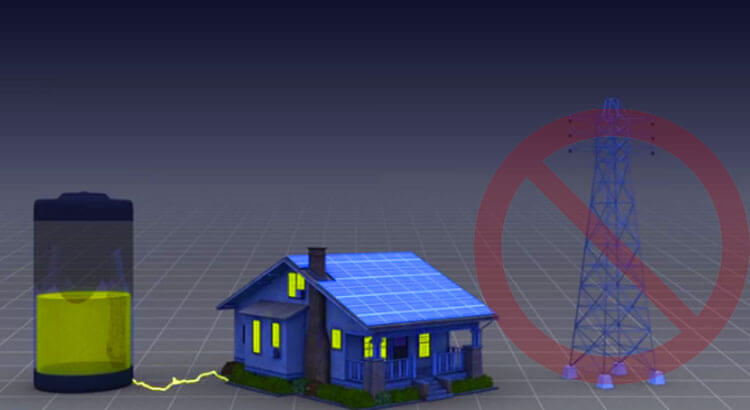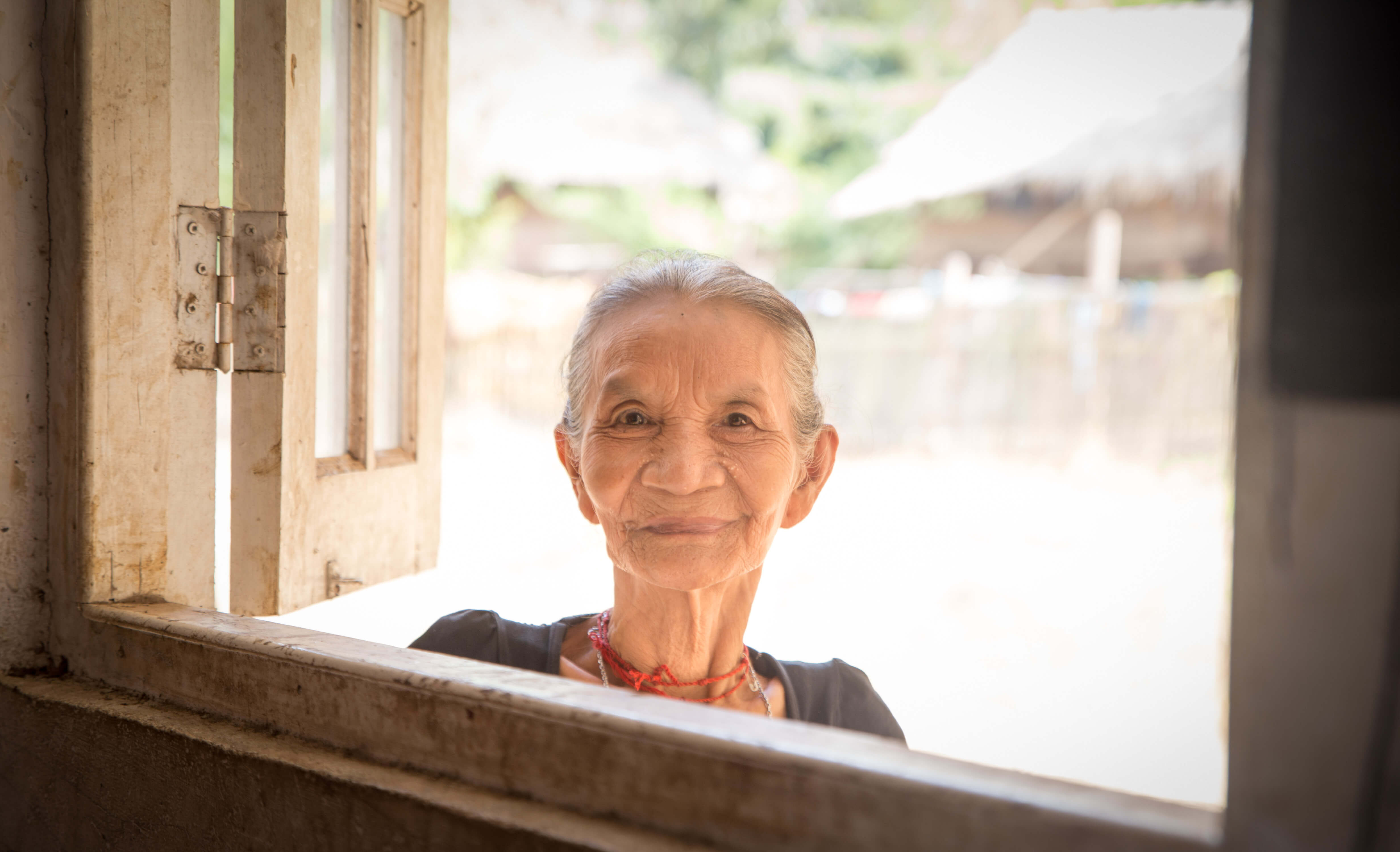Turn A $2000 Shipping Container Into An Epic Off-Grid Home
All you need is around $2000 to begin building one of these epic homes – made from recycled shipping containers! Check out some of these amazing creations!
A luxury home doesn’t always necessarily mean thousands of square footage, towering great rooms and gilded toilets. Take these homes for example: to begin building one of these epic houses, all you need is $2,000. That $2,000 will buy you a shipping container. What you do with that shipping container… well, that’s completely up to you. Some creative people have found a way to transform this rudimentary “room” with metal siding into luxury housing that blows us away. These homes are epic.
1.) A shipping container doesn’t have to be a closed space.

2.) Blue container? Run with it!

3.) Open up the metal boxes and let your imagination run wild.

4.) *jaw drops*

5.) The shapes are basically the same, but wow.

6.) Utilitarian… and awesome.

7.) The best part about this one is that you know they made it out of shipping containers.

8.) This open concept was taken a step further with a sliding garage door.

9.) You don’t rob this house. Ever.

10.) Modern, yet … not.

11.) This is the kind of home that keeps a person happy.

12.) Already-made pool? Yes please.

13.) Recycled materials AND it’s good for the planet.

14.) This collection of containers is just epic.

15.) These are so inspiring.

If you enjoyed these what these people did with their containers then you will love this couple’s new tiny home.
The best part of the gallery that this Reddit user shared? The shipping containers are recycled materials, so you’re actually helping the environment if you invest in making a luxury shipping container home. You can’t beat a base price of $2,000. What a marvellous idea; share it with others by clicking on the Share button above/below this article.
This Dad Gives His Sick Son Marijuana Extract. The Results… Mind-blowing!
Jayden’s dad was desperate to help him overcome his epileptic seizures.
This video is from a new documentary The Culture High which looks at both sides of the marijuana prohibition argument.
After taking more than 22 pills a day, Jason decided that enough is enough and gave his son Marijuana extract. The results will surprise you.
The University of Texas also recently published their research into the long-term effects of marijuana.
Support the film and watch the full documentary today.
.
The Senate Had A Hearing On Oil Exports And Didn’t Mention The Environment Once
On Thursday, the Senate Energy Committee convened a hearing to discuss the U.S. ban on crude oil exports, which has been in place since 1973. With the United States in the midst of an oil boom – and with Americans using less gas than ever before – lifting the ban would have profound implications both at home and abroad, issues that dominated the panelists’ testimony and committee’s questions.
“The national security side will be an extremely important part of this going forward,” Chairwoman Sen. Lisa Murkowski (R-AK), said during the hearing. “We all recognize that the world is a very, very volatile place right now.”
Lifting the export ban, several panelists argued, would allow the United States to leverage more power over potential oil sanctions by assuring that the international market would remain stable. It would also, panelists said, move the center of the international oil market away from unstable countries – both Russia and Iran merited a mention – stabilizing the overall supply.
Domestically, Carlos Pascual, fellow at the Center on Global Energy Policy at Columbia University, argued that lifting the export ban would lower gas prices and boost the U.S. economy. “The critical focus on the part of Americans is price,” Pascual said. “Every single study that has been done by a major institution has come to the same conclusion: lifting the export ban will reduce the price of gasoline in the United States,” while adding $38.1 billion to the U.S. GDP by 2020.
In all these calculations, however, there was one glaring omission: no panelist – or senator – talked about how lifting the export ban would impact the environment.
“It feels ridiculous to have a discussion about lifting the ban on oil exports and not talk about climate change,” Karthik Ganapathy, U.S. communications director at 350.org, told ThinkProgress. “What it boils down to is lifting the ban encourages and incentivizes oil production in the U.S. and that’s the wrong direction.”
Lifting the crude oil export ban would increase demand for oil in the international market, which would incentivize U.S. oil companies to expand their businesses and explore new options for drilling. Most likely, that would mean the extraction of tight oil reserves – the kind of petroleum extracted from shale or sandstone through hydraulic fracking.
“Our concern is that we need to be moving away from oil,” said David Turnbull, campaigns director at Oil Change International. “We need to be not relaxing U.S. oil regulations in the context of the climate crisis.”
Here are three issues surrounding crude oil exports that weren’t mentioned in Thursday’s Senate hearing.
Greenhouse Gas Emissions
“The industry wants to lift the ban so they can increase production and have a bigger market to send their oil around,” Turnbull said. “The logical conclusion to that is that they would be ramping up production, and that has a clear climate impact.”
According to the International Energy Agency (IEA), one-third of the world’s fossil fuel reserves – including coal, oil, and natural gas – need to remain in the ground to have a 50-50 shot at staying beneath the 2° Celsius warming limit internationally agreed upon by 141 countries in the Copenhagen Accord (a limit that, by some estimates, doesn’t go far enough in protecting us from the negative effects of climate change). To raise that chance to 80 percent, only one-tenth of current fossil fuel reserves can be extracted and burned by 2050. Working under those incredibly tight parameters, a huge amount of America’s natural gas needs to remain in the Earth for the 2°C goal to be feasible.
Lifting the crude oil export ban would encourage producers to flood the market with even more crude oil, stimulating the burning of a fuel that needs to stay in the ground if the 2°C goal has any chance of being a reality. As Oil Change International warned in a 2013 report, “Without an effective international regime to keep global greenhouse gas emissions below recognized thresholds, deregulating U.S. crude oil exports can only exacerbate the impending climate crisis.”

CREDIT: Josh Burstein / NextGen Climate Action
In addition to encouraging the extraction of tight oil, lifting the export ban could increase the amount of heavy crudes – like tar sands – brought into the U.S. for refining.
“Before we had this new boom of the lighter, desirable crude, [the U.S. oil industries] built a number of refineries that are specialized in getting usable product out of heavier crude,” Janet Larsen, director of research at Earth Policy Institute, told ThinkProgress. “If we can export the lighter stuff, we may end up … sending it to places that can refine it better, and using the refineries we have to process the heavier stuff.”
That, Larsen explains, would be tantamount to an double-whammy, increasing the production of both light crude and heavier, more greenhouse gas-intensive heavy crude.
Water Concerns
If deregulating crude oil exports encourages U.S. producers to ramp up extraction of tight oil, leading to an increase in fracking, the country’s already dwindling water supply could also be on the line.
Fracking is a water-intensive process, requiring millions of gallons of water to drill a single well. In places like California, which is in the midst of a historic drought, fracking would require the diversion of precious water resources to drill for a fuel that will simply exacerbate climate change, which some say caused the drought in the first place.

CREDIT: AuntSpray
But it doesn’t take a drought to raise concerns about the impact an increase in fracking would have on water supplies. Last week, the Environmental Working Group released a report on the chemicals found in California’s fracking wastewater, listing things like “petroleum chemicals, heavy metals, and radioactive elements.”
Even in places not currently experiencing drought, fracking – which, according to the EWG, produces more wastewater than it does oil or gas – gives environmentalists pause. “Pennsylvania is not necessarily in a drought,” Turnbull said, “but that doesn’t mean that people’s drinking water should be impacted.”
Dangerous Transportation
Since mid-February, four trains carrying crude oil have derailed in the U.S. and Canada, sparking massive fires and spilling their contents into waterways and communities.
It’s becoming increasingly clear that trains are not a particularly safe method of transporting crude oil. And yet, if the export ban is lifted, oil companies looking to ship their crude overseas will have to get their oil to market somehow – either by train or pipeline.
“Transporting oil, no matter which way you do it, is not safe,” Turnbull said. “It’s a combustible fuel. It causes problems when it gets mixed with water. When a pipeline leaks in a neighborhood, it can decimate it.”
To Turnbull, the debate over relaxing crude oil export regulations highlights a dangerous chasm between energy policy and climate policy. “It’s really incoherent,” he said, “to talk about the crude export ban and relaxing oil regulations without talking about climate change.”
PHOTO CREDIT: Anan Kaewkhammul
Written By: Natasha Geiling
Japanese Scientists Have Successfully Transmitted Electricity Wirelessly Through The Air
Scientists in Japan have successfully transmitted electricity wirelessly through the air, validating much of the work Nikola Tesla did while he was alive. Debate has raged for decades about whether it could be done, and scientists with the Japan Aerospace Exploration Agency have done it. They used microwaves to deliver electricity to a target 55 meters away.
“This was the first time anyone has managed to send a high output of nearly two kilowatts of electric power via microwaves to a small target, using a delicate directivity control device,” a spokesman for the agency told AFP on Thursday.
“SSPS consists of a space-based power generation/transmission facility that gathers sunlight, converts it into microwaves or laser beams, and transmits those to the ground; and a power receiving facility on the ground,” explained researcher Yasuyuki Fukumuro.
“There are many technological challenges to solve before SSPS can be implemented. When transmitting power by microwaves, a significant technological challenge is how to control the direction, and transmit it with pinpoint accuracy from a geostationary orbit to a receiving site on the ground,” he added.
https://www.youtube.com/watch?v=OLdXyASvw9U
This Former Marine Walked Away From Civilization And Into The Woods. His Life Will Amaze You!

Meet Mick Dodge. Mick has spent 25 years living away from civilization entirely, living off of the land in a rainforest. Mick is a former marine who left his 9-5 job as a heavy equipment mechanic at Fort Lewis to take up an alternative lifestyle.
“That’s my real passion,” says Dodge.
Dodge is a native of the Hoh Rainforest, which is located on the Olympic Peninsula of western Washington State. His great-grandparents originally settled the area. Dodge grew up to travel around the world and become a huge fitness freak.
At 62 years old, Dodge doesn’t have time for any fancy gym, or even society. His gym is the great outdoors. He calls it the Earth Gym, kind of a YMCA in the forest. Dodge spends his days and nights in the forest. He wears no shoes, and simply walks barefoot through streams and between trees. The reason he walks with no shoes is because his feet hurt.
“My feet hurt. They hurt so bad that I could barely walk and I had always used my walk and run to handle the stress of modern living. The Hoh is home for me. So I went home to heal my feet.”
“The results came quickly. Not only were my feet healing, but my back pain, neck pain and most of all my heart pain disappeared, and in no time at all I was back into a dead run, stepping out of the sedentary, stressed, sedated and secured living of the modern world. I was dancing as the fire, running as the wind, strengthening as the stone and flowing as the water within, by the simple act of touching with my bare soles and allowing the Earth to teach.”
Of course, not wearing shoes hasn’t always worked out for him. On three separate occasions, he’s injured his feet. Once while running in the early forest, he almost lost his toes to frostbite. That taught him a lesson. “Don’t throw the baby out with the bathwater.” Sometimes he wears some knee-high buffalo skin boots with elk horn buttons. What a fella!
Dodge is a practical kind of naturalist and it helps him survive. In the wet climate, he wears plastic garments to protect from the rain. “The art of living out here is the art of staying dry,” he said. He also eats pretty much whatever he comes across.
“I am an omnivore, able to eat a wide variety of food, which also means that I learned how to become a scavenger and allowed the hunger in my belly to guide me into discovering all kinds of food. When a cougar kills an elk, the entire forest moves in to eat. So I do the same,” he said. “But there is one highly spiritual food that I try to maintain in my stashes and storage places and that is chocolate-chip cookies. My grandmothers got me hooked on them.”
His lifestyle may make him seem like some kind of crazy forest hermit, but he’s hardly in isolation. He spends his time with a community of mountain dwellers. He even gets the occasional girlfriend. “On my journey, I have formed so many wonderful connections with women, formed strong brother-and-sister relationships with them,” he said. “I may not be able to figure out what they are always talking about. But if their soles are touching the earth, I am more able to figure it out.”
Dodge doesn’t miss civilization, but he doesn’t shun it either. “There is no way to get away from it. So I developed a physical fitness practice in how to step in and out of it, stepping out of the walls, machines, electronics, social babble for a while, ground back into the natural flow of the land, and then go back in.”
Dodge’s life is being covered in a new National Geographic Channel series called The Legend of Mick Dodge. The show focuses on all his adventures in the mountains.
Dodge is an interesting cat. He’s connected with nature, has a sense of humor, and lacks the self-righteousness you get with the off-grid naturalist types. It’s pretty refreshing.
“My family has perfected the art of dodging civilizations for hundreds of years. All I have to do is follow my feet,” Dodge puts it plainly.
LSE Students Stage Occupation In Protest At ‘Profit-Driven Education’
Students at the London School of Economics have occupied a central administration room at the university in protest at what they call the marketisation of higher education.
The group of about 40 students used bicycle locks to barricade themselves in the Vera Anstey Suite of LSE on Tuesday night and have remained there since.
Organisers say the occupation they call the “Free University of London” aims to create an “open, creative and liberated space, where all are free to participate in the imagining of a new directly democratic, non-heirarchical and universally accessible education”.
They maintain the occupation is an attempt to change the “profit-driven and bureaucratic business model of higher education” that has locked students into debt and perverted the purpose of university.
A list of demands, released on Wednesday, called for LSE management to lobby the government to scrap tuition fees for all students, end zero-hour contracts for university staff, cut ties to organisations involved in wars and military occupations, and to ban police from entering the university campus.

“We demand an education that is liberating – which does not have a price tag. We want a university run by students, lecturers and workers,” the students wrote.
“When a university becomes a business the whole of student life is transformed. When a university is more concerned with its image, its marketability and the ‘added value’ of its degrees, the student is no longer a student – they become a commodity and education becomes a service. Institutional sexism and racism, as well as conditions of work for staff and lecturers, becomes a distraction for an institution geared to profit.”
The occupied space is being used as a hub for political discussion and debate, with workshops run throughout the day, including one entitled “Why is free education necessary in 2015?”.
One of the occupiers, Jade Jackman, said the group’s main aim was to start a dialogue with university management. She said: “We’ve opened up the door to lots of students who are coming in to talk about our demands. We want them to represent what all the students think. We just had an economics forum and a lot of people were talking about how they’re dissatisfied with the way economics is taught, because it means that we don’t see finance in a different way, we don’t compute it.
“We have one of our professors here at the moment, and we’re going to have a conversation with him, as well as with [political commentator] Owen Jones. The administration director called us this morning but we said that we didn’t any of the administrative staff in the room.”
A statement from LSE commended the students’ desire to achieve change. “On Tuesday evening a group of approximately 20 students occupied the Vera Anstey Room in the Old Building at LSE, highlighting a broad range of demands relating to higher education,” it read. “LSE was founded for the betterment of society and it is clear that this principle continues to be a guide for many of our students. Exchanges between the group and LSE security staff have been positive.”
The LSE occupation comes as students in the Netherlands this month called for similar changes to the country’s higher education system. Dutch students occupied the University of Amsterdam’s Bungehuis building in February, which resulted in the university board of directors initiating a lawsuit against the occupiers seeking a fine of €100,000 per student per day.
In 2011, LSE students carried out an occupation successfully calling for an end to the university’s relationship with Saif al-Islam Gadaffi, the son of the late Libyan dictator, amid charges of crimes against humanity. The previous year, students at University College London occupied a central area of the university in protest against government cuts and fees.
4 Aeta Tribal Women Return From India As Solar Engineers
MANILA, Philippines-Six months flitted like a dream for four Aeta grandmothers who traveled 4,800 kilometers to undergo free training in India and are now officially solar engineers.
Wearing shades and cheerfully recalling their experience at Barefoot College in Rajasthan, India, the four were a far cry from the group of introverts who left in September last year.
The four-Evelyn Clemente, 49; Sharon Flores, 40; Cita Diaz, 40; and Magda Salvador, 42-flew home on Monday from India via a Cathay Pacific flight.
“Time went by so quickly it feels like a dream,” Flores told the Inquirer in Filipino, recalling the kindness of strangers that gave her and her companions the opportunity to literally light up their communities.
“We know only a little English. We know how to write only our names. But it was enough,” she smiled.
First trip
A solar engineer sets up systems, including photovoltaic (“photon,” or light, and “voltage”) panels, to capture the sun’s heat and light and convert these into electrical or thermal energy for practical use. This is known as “green engineering.”
The use of solar power effectively reduces the consumption of traditional fossil fuels, such as oil, natural gas and coal. A college degree is usually required to become a solar engineer.
Flores said she and her companions did not feel lost although it was their first trip ever far away from their home provinces of Zambales and Tarlac.
“People were kind wherever we went,” she said.
Language barrier
According to Salvador, the group learned solar electrification with 32 other classmates from 11 countries.
“We hardly understood each other, speaking different languages. But somehow, we all got along well,” Salvador said.
She said the drive to learn something useful for their communities was the one factor that everyone shared.
For her part, Clemente admitted that she and her companions found the lessons difficult at first but soon got the hang of it.
“They (teachers) used color-coding to teach us so it soon became easier for us to learn,” she said, pointing out that the method effectively broke the language barrier.
Rural needs
The four women have not had any formal education until their trip to Barefoot College with the help of the Indian government and the nongovernment organizations Diwata Women in Resource Development Inc., Land Rover Club-Philippines and the Philippine Mine Safety and Environment Association.
Since 1989, Barefoot College has been focused on using solar energy to address needs in rural and remote villages worldwide.
Barefoot College, formerly the Social Works and Research Center, is an organization committed to helping the poor, neglected and marginalized sectors around the globe.
‘Change the world’
According to Indian Embassy First Secretary N. Ramakrishnan, the primary concept of Barefoot College is to “train a grandmother and change the world.”
He told the Inquirer that Barefoot College took in semiliterate, middle-aged women from far-flung areas around the world “to train them and then carry forward” what they learned.
Ramakrishnan said the Indian government sponsored the women’s education through the Indian Technical and Economic Cooperative Program of the Ministry of External Affairs.
Diwata Women president and lawyer Patricia Bunye said two of the new solar engineers already had the capability to help light up 100 households using solar energy.
Clemente and Flores live in a resettlement area in Sitio (settlement) Gala, Aningway Sacatihan, Subic, Zambales, with some 130 families. Diaz and Salvador are residents of Bamban town in Tarlac.
Bunye said her group was reaching out to possible financiers to set up solar electrification in two communities. Each community would need $56,000, or P2.5 million, she said.
Lighting up lives
Ramakrishnan said the four women’s education in solar engineering was more than symbolic.
“In lighting up their lives, they would be lighting up their villages,” Ramakrishnan said.
Disclaimer: The comments uploaded on this site do not necessarily represent or reflect the views of management and owner of INQUIRER.net. We reserve the right to exclude comments that we deem to be inconsistent with our editorial standards.
To subscribe to the Philippine Daily Inquirer newspaper in the Philippines, call +63 2 896-6000 for Metro Manila and Metro Cebu or email your subscription request here.
Factual errors? Contact the Philippine Daily Inquirer’s day desk. Believe this article violates journalistic ethics? Contact the Inquirer’s Reader’s Advocate. Or write The Readers’ Advocate:
c/o Philippine Daily Inquirer Chino Roces Avenue corner Yague and Mascardo Streets, Makati City,Metro Manila, Philippines Or fax nos. +63 2 8974793 to 94
This Tiny House Looks Like A Shell. The Inside? Out Of This World!
Many tiny houses, due to their sustainability, have taken on shapes that represent nature. Some look like pumpkin-shaped domes, others bloom open like flowers, and many look like logs – including one trippy log that look like it’s straight out of the pages of Alice In Wonderland.
Yet, the Nautilus house by Mexican architect Javier Senosiain of Arquitectura Organica, is the most fantastical tiny house we’ve stumbled upon thus far. Shaped as a shell, this home near Mexico City was inspired by the work of Gaudí, Frank Lloyd Wright, and Mother Nature herself.
Just look at it! It looks like something a mermaid would live in…or a giant squid! Whoever takes residence here, they’re sure to be as happy as a clam.
It is an example of what Senosiain describes as “bio-architecture” – the idea that buildings based on organic forms bring us back to our cultural roots and help to create harmony with nature.
It’s a beautiful concept and a beautiful home, so let’s take a peek inside this shell…
What do you think?
Your Pee is an Excellent Fertilizer. Here’s How & Why You Should Use It
Modern synthetic fertilizer consists of varying amounts of nitrogen (N), phosphorus (P) and potassium (K), which are added to croplands to replace these depleted nutrients in the soil. There are several problems with this method, one of the primary ones being that these are finite resources.
Nitrogen, for instance, must be captured through a process that requires natural gas. And, unlike nitrogen, phosphorus and potassium cannot be synthesized, and our aggressive large-scale farming methods, which deplete soils of nutrients that then must be replaced, are quickly burning through available phosphorus and potassium stores.
We’re now hearing discussions of “peak phosphorus and potassium” in the way we discuss “peak oil,” and, according to some, we may soon be facing looming shortages of these two critical fertilizer ingredients. According to well-known investor Jeremy Grantham, writing for Nature:
“These two elements cannot be made, cannot be substituted, are necessary to grow all life forms, and are mined and depleted. It’s a scary set of statements. Former Soviet states and Canada have more than 70 percent of the potash [potassium]. Morocco has 85 percent of all high-grade phosphates [phosphorous]. It is the most important quasi-monopoly in economic history. What happens when these fertilizers run out is a question I can’t get satisfactorily answered and, believe me, I have tried. There seems to be only one conclusion: their use must be drastically reduced in the next 20-40 years or we will begin to starve.”
Urine May Represent the Future of Fertilizer
Human urine is naturally rich in nitrogen, potassium, and phosphorus, and with about 30 billion gallons produced every year in the US alone, it’s certainly in abundant supply. For the average person, a year’s worth of urine contains about eight pounds of nitrogen and nearly one pound of phosphorus – that’s enough to grow about one year’s worth of food!
I am in complete agreement with this concept and for the last year have been collecting all my urine and putting it in the that I feed my fruit trees, vegetables, herbs, and aloe. It works wonderfully with , as the nitrogen in the urine helps balance the carbon in the biochar.
According to the Rich Earth Institute, which is running an experiment in nutrient reclamation, using source-separated urine as a fertilizer, getting urine out of wastewater and into agriculture will not only help reduce pollution but also represents a viable natural fertilizer for the future. They state:
“The average person flushes the toilet five times a day, and four of those times are just for urine. This means that 80% of our flushwater-or over 4,000 gallons of clean water each year per person-is used just to get rid of urine! That is a lot of clean water used to transport ‘liquid gold’ into the sewer, where it becomes pollution. If we save it instead of flushing it, we can harvest a valuable resource that we can use in agriculture.“
The Rich Earth Institute experiment is the first legally authorized community-scale “urine reuse” project in the US, but field trials involving urine fertilizer are already underway in many other countries, including Europe, Africa, and Asia.
As for the “yuck factor,” human urine isn’t nearly as “gross” as it seems, since it’s virtually sterile when it leaves your body. Just to be sure (since urine can become contaminated by fecal particles), the Rich Earth Institute “pasteurizes” collected urine in solar heaters prior to sprinkling it on crops. The first experiment, conducted in 2012 on a hayfield, yielded impressive results…
-Urine-treated hay was darker green in color and more lush than control plots
-Hay treated with the most urine (100 pounds of nitrogen/acre) yielded 5.8 times as much hay as the control plot
-Hay treated with the mid-level amount of urine (50 pounds of nitrogen/acre) yielded 3.8 times as much hay as the control plot
In 2013, the field trial was expanded, both in the number of volunteers donating urine and the scope of the field trials. The group began testing for optimal dilution rates of urine when applied to hay and they’re now working with the US Environmental Protection Agency (EPA) testing the use of urine fertilizer on vegetables.
The idea seems to be catching on quickly, as they now have three additional farms using urine fertilizer, along with a waiting list that’s only hindered by how much urine they can collect. Ultimately, they’re hoping to create “peecycling” programs that other cities and states can copy, but this will require some major changes to regional and national policy and wastewater treatment facilities.
Urine Plus Ash Makes Beets Grow Nearly 30 Percent Larger Than Conventional Fertilizer
Separate studies have also shown promise in using urine as fertilizer. In one experiment, researchers compared beets grown in four different ways: one with conventional mineral fertilizer, another with urine, a third with urine and wood ash, and a final control group grown with no fertilizer.
The beets fertilized with urine were 10 percent larger, and those fertilized with urine/ash were 27 percent larger than those grown in mineral fertilizer. As for nutrient content, all the beets were similar, and in a blind taste test the beets were rated as equally flavorful.
The researchers concluded that urine is a perfectly viable source of fertilizer, and one that is readily available and sustainable (the average American urinates 500 liters a year). Urine has also been used to fertilize cabbage, tomatoes, sweet peppers, and cucumbers, with similar favorable results, and it’s free – unlike synthetic fertilizers that some farmers around the world can scarcely afford.
Setbacks to Widespread Use of Urine Fertilizer
There are some issues that must be overcome before urine fertilizer can become “mainstream.” Although urine is technically sterile, it does contain traces of pharmaceuticals, which are not removed at wastewater treatment plants. The Rich Earth Institute is currently working with the EPA to track how the soil is absorbing these types of contaminants from urine fertilizer.
“When we use flush toilets that are connected to sewers, these residual drugs pass largely unchanged through the treatment plant in about twenty-four hours and then go directly into rivers, lakes, or the ocean, where they can harm sensitive aquatic life and end up in our drinking water. If we spread the urine on agricultural land instead, the robust soil ecosystem has a chance to break down the drugs and biodegrade them over a much longer period of time, greatly reducing or eliminating their levels before they ever reach a body of water. In this way, soil application is a great improvement over current practice.”
So far, research suggests that any residual hormones or pharmaceuticals are likely to be negligible and basically non-existent in urine-fertilized crops. In fact, there may be benefits to spreading such urine contaminants on land, as opposed to depositing them in waterways, as is currently done. The Rich Earth Institute explained:
“Using specially designed toilets that collect urine separately from feces, urine can be collected in a storage tank instead of being flushed down the drain. After being sanitized, it can be used as a high-nitrogen liquid fertilizer, taking the place of chemical fertilizers. This system is more efficient than sewer-based sanitation at getting all the nutrients from the urine to the farm, because the source-separated urine is directly collected and transported. In municipal wastewater, the nutrients in the urine are incredibly dilute, and so it is very challenging to extract them again. In fact, many treatment plants let most of the nitrogen and phosphorus pass through untreated. Some do capture the phosphorus, but most which treat for nitrogen drive it off as a gas, rather than capturing it as fertilizer.”
Another issue is the fact that sewage systems would have to be radically redesigned to separate liquid waste from solid, a practice that requires the use of separating toilets that have a divided bowl and independent pipes to keep the urine separate. There are other benefits to using separating toilets as well, such as less water usage and less energy requirements in sewage treatment. However, neither the toilets, nor the sewage systems, are in widespread use in the US. As reported by the Rich Earth Institute:
However there is nothing that is preventing you and your family from implementing this system now. If you have a garden, it is relatively easy to collect your urine and apply it to the garden. This will present less of a burden on your water filtration facility, but, more importantly, it puts the nutrients where they belong, back in the soil, not in the water system. It is easy to collect the urine in one-quart wide mouth Ball jars and then transfer them to larger 2.5-gallon containers if you need to. Just be careful to dilute it about 5:1 before you apply it to the soil that surrounds the plants you want to nourish.
Biological Agriculture Is the Future of Food
The use of urine as fertilizer is a major improvement over chemical fertilizers. However, according to , an internationally recognized expert on the benefits of sustainable soil science, the real nutrition your plants require is actually derived from microorganisms in the soil. These organisms take the mineral material that’s in your soil and convert it into a plant-available form. Without these bioorganisms, your plants cannot get the nutrients they need. So what you need is not more soil additives; what you need is the proper balance of beneficial soil organisms.
According to Dr. Ingham, there’s no soil on Earth that lacks the nutrients to grow a plant. She believes the concept that your soil is deficient and needs added phosphorus or nitrogen in order to grow plants is seriously flawed, and largely orchestrated by the chemical companies, because it’s based on looking at the soluble, inorganic nutrients that are partly present in your soil.
Interestingly enough, you can use a starter culture to boost the fermentation and generation of beneficial bacteria much in the same way you can boost the probiotics in your . For compost, this strategy is used if you want to compost very rapidly. In that case, you can use a starter to inoculate the specific sets of organisms that you need to encourage in that compost. This is but one example of high-performance agriculture methods, which are a FAR superior alternative to attempts at “improving” agriculture through the use of genetic engineering and chemical fertilizers. In order for plants to flourish, the soil must first be made hospitable for beneficial microorganisms. To accomplish this, you need to:
1. Have the right nutrient balance in the soil
2. Inoculate the soil. This can be done by adding soil probiotics or basic fermentation products such as compost tea
3. Apply proper food (fertilizer) for the microorganisms to consume and thrive. The microbes in turn will then feed the proper nutrients to the plants grown in that soil. The better you’re able to fertilize the microbes, the healthier your plants will be, and the fewer plant diseases, pest infestations and weed problems you’ll have
Biological Gardening/Farming Aims to Bring Health Back to Soil
Urine fertilizer may have an important place in high-performance agriculture, but there are other exciting advancements as well, including things like humic acid or humates, which promote the proliferation of beneficial microorganisms in the soil, as well as sequester carbon in the soil.
The application of (charcoal created by slowly heating biomass such as wood and plant materials in a low-oxygen environment) to soil may also help sequester carbon for hundreds, perhaps even thousands of years, and radically improve soil fertility by serving as a substrate for beneficial soil microbes. Biochar works particularly well with urine as it captures the nitrogen like a magnet and releases it slowly to the microbial community that will feed the plants. Otherwise, the nitrogen can easily leach away.
are also creating a natural product known as “vermicompost,” which greatly improves plant growth and make plants more resistant to disease and insects than plants grown with other composts and fertilizers. Personally, one of my new passions is sustainable, , and Dr. Arden Andersen is a world leader in this field
It’s important to realize that modern industrial agriculture has veered quite far from the basic sciences of soil cultivation and plant nutrition. According to Dr. Andersen, the reason they’ve been able to make such great strides in increasing the nutritional density and yield of their crops is by returning to those basic sciences using synthetic fertilizers, etc. But this is better done naturally. For more information, including how to try biological agriculture in your own backyard, watch my interview with Dr. Andersen below.
If you want to use urine to fertilize your backyard garden, feel free. But keep in mind that urine should be diluted with water for most plants and should be separated from solid waste to avoid contamination (so collect your urine in a bottle or bucket, or invest in a urine-separating toilet). You can also add urine to your compost heap to enhance its nutritional content, or like I do, add it to your that you add to nourish your plants.
Sources:
Grist March 12, 2014
Gizmodo January 14, 2014
Nature November 14, 2012
Rich Earth Institute, The Solution
Rich Earth Institute, FAQs
Rich Earth Institute, FAQs
Journal of Agricultural and Food Chemistry February 10, 2010
Yahoo Voices April 24, 2013
Rich Earth Institute, FAQs
Rich Earth Institute, The Solution
Image: www.energeticforum.com/agriculture/4420-human-urine-excellent-fertilizer.html 
Tesla’s New Project Could Take Millions Of People Off The Grid

Elon Musk, founder of Tesla Motors, Space X, Paypal, and many other companies, has come up with another brilliant idea that could radically change everyday life for the average person.
Musk’s new idea could take family homes and businesses off of the power grid, with the help of a solar powered battery pack.
“We are trying to figure out what would be a cool stationary (battery) pack. Some will be like the Model S pack: something flat, 5 inches off the wall, wall mounted, with a beautiful cover, an integrated bi-directional inverter, and plug and play,” Musk said in a statement last week.
To meet the demand for the batteries, Musk is planning on building a giant battery manufacturing complex, which will be specifically used for this company and this company only.
Musk said that he expects to release more details to the public towards the end of the year, or early next year
It is being speculated that one of Tesla’s partner companies, SolarCity, will be involved in this project.
Musk is currently working on a number of bold new projects. As we reported last year, Musk announced that SpaceX is currently developing a micro-satellite network that will work to bring cheap and unrestricted internet access to the world.
He said on his twitter page this week that they are in the early stages of development on the project, and that more details will be coming in the following months. Responding to a comment about the cost of the service, Musk said that the internet service would be “unfettered certainly and at very low cost.”
John Vibes writes for True Activist and is an author, researcher and investigative journalist who takes a special interest in the counter culture and the drug war. .
10 Of The World’s Most EXTREME Buddhist Temples And Shrines
Buddhists believe in karma, the cycle of rebirth… and building some truly epic temples.
The magnitude of these temples exemplifies the enhanced spirituality Buddhists feel for the teachings of Siddhartha Gautama (or Buddha, as he’s more commonly known).
Buddha, meaning “the awakened one,” lived from 566 to 480 B.C. He was the son of a warrior king in India, and at first, he lived a pampered life. Yet, with age, he began to crave a deeper understanding of life’s true meaning.
His quest for an answer led him to meditate under a tree for an extreme amount of time-seven weeks-until he understood how to achieve salvation. Buddha then became a monk and his disciples began building temples that acted as physical metaphors for Buddhism.
For instance, temples built on the edge of Himalayan cliffs represent a heightened sense of faith. Cave temples have holes carved into the ceiling, which emit heavenly lights and a sense of spiritual serenity. One Buddhist temple even allows wild tigers to roam free, emphasizing their compassion for all living things.
To see these beautiful Buddhist symbols of spirituality, check out our below gallery and make sure to SHARE these soul-stirring images with anyone you feel is truly heavenly.
What do you think?
World’s First Urban Algae Canopy Produces Oxygen And Fuel Every Day
It works as a roof, or window that grows its own shading. The Urban Algae Canopy is a bio-electric glass structure, in which water flows through and microalgae grows. When the sun shines, the single celled algae photosynthesize and multiply to create shade.
The real upside to this, though, is that one tent produces as much oxygen as 40,000 square meters of woodland, AND 330 pounds of biomass every day.
Biomass is, essentially, plant or animal material that is broken down. It can be used for fuel, in the case of biofuel, or biodiesal; though burning it does release carbon dioxide it is considered a highly sustainable form of fuel since it can be grown.
 http://inhabitat.com/incredible-urban-algae-canopy-produces-the-oxygen-equivalent-of-four-hectares-of-woodland-every-day/ http://www.domusweb.it/en/news/2014/04/30/urban_algae_canopy.html
http://inhabitat.com/incredible-urban-algae-canopy-produces-the-oxygen-equivalent-of-four-hectares-of-woodland-every-day/ http://www.domusweb.it/en/news/2014/04/30/urban_algae_canopy.html
Image credit: http://www.ecologicstudio.com/v2/index.php
This blog is free & open source, however embeds may not be.
25 Brilliant DIY Old CD-Recycling Ideas

CDs are small and thin but they sure start to take up a lot of space after a lifetime of collecting them. These days, music has gone digital and just like cassette tapes were taken out of stores, someday soon CDs are sure to see the same fate.
Before you race to the nearest trash can and dump out all of your old CDs, know that CDs are recyclable despite how many end up polluted landfills each year. You can recycle your unwanted CDs, or you can seek inspiration from these 25 brilliant DIY ideas how to recycle your old CDs into something new and cool.
1. Animal Sculptures Made Of Shattered CDs 

Tossing your old CDs out in the trash is the last thing you want to do in terms of saving the environment. It takes 30 CDs to equal one pound of plastic, and in order to manufacture one pound of plastic a number of resources are exhausted, including 300 cubic feet of natural gas, 2 cups of crude oil, and 24 gallons of water.
Once you throw your old CDs away the toll on the environment goes up even more. It is estimated that it takes over 1 million years for one CD in a landfill to completely decompose. The trouble is an estimated 5.5 million old CDs end up in landfills every year thanks to the fact that every month some 100,000 pounds of CDs become unwanted and obsolete.
2. Guitar Adorned In CDs 
Some of us still cling to boxes and bags of old CDs; it’s hard to throw away music, especially music you liked enough to buy the CD of. Unless you want to end up on an episode of TLC’s Hoarders there comes a time to say goodbye to those dusty old CDs featuring the Hanson Brothers and Spice Girls.
3. Mosaic Tile Birdbath 



When you get up the nerve to dispose of your CDs, just make sure and recycle them one way or another, either using them to make something new and creative or tossing them out in the recycle bin.
4. DIY CD Mirror 
CDs are made of polycarbonate plastic and aluminum, which are high value materials in the world of recycling. Recycling CDs helps slow down the deterioration of the planet by reducing the amount of new plastic that needs to be manufactured, and removing excess waste from landfills.
If you recycle your CDs they get to have a new life as any number of things, perhaps an automotive industry part, or office equipment.
5. Jewelry Box Decorated With Old CDs  6. Christmas Ornament Decorating Made Easy!
6. Christmas Ornament Decorating Made Easy!
Wish I had seen this a month ago! Oh well, hope I remember next year…

 7. Wastelandscape
7. Wastelandscape
Not so sure this is ‘DIY’ but cool regardless!

 8. CD Table Top
8. CD Table Top 
 9. Mosaic CD Flower Pot
9. Mosaic CD Flower Pot  10. Delightful Door
10. Delightful Door  11. Tissue Box Spruced Up With CD Clippings
11. Tissue Box Spruced Up With CD Clippings  12. A Musical Way To Fancy Up Your Footwear
12. A Musical Way To Fancy Up Your Footwear  13. Creative Coasters
13. Creative Coasters 
 14. Side Table Embellishments
14. Side Table Embellishments  15. Collar Necklace
15. Collar Necklace 
 16. Bling Bangle Bracelet
16. Bling Bangle Bracelet  17. Unique Wall Art
17. Unique Wall Art  18. CD Wall Clock
18. CD Wall Clock
What a great way to spice up an inexpensive or old and dated piece of furniture-hey that’s like recycling two products for one awesome result.
 19. Christmas Tree Made Of CDs
19. Christmas Tree Made Of CDs 
Now if only you could wire this wall clock up so that it played a different song every hour!
20. Broken CD Becomes Glamorous Clutch 
 21. The Perfect Way To Pop Your Collar
21. The Perfect Way To Pop Your Collar 
 22. Galaxy Cap
22. Galaxy Cap  23. Instant Art Work- Shred In Mixer, Glue, Repeat
23. Instant Art Work- Shred In Mixer, Glue, Repeat  24. Fridge Door
24. Fridge Door
See 18 of the Most Creative DIY Christmas Trees Ever
 25. Madrid, Spain
25. Madrid, Spain 
A delicious dedication to your favorite bands of the past…
Photo Credits: meandmydiy.com, Sean Avery, etsy.com, intuition-physician.com, Elise Morin & Clémence Eliard, Elena Nikitina, makeiteasycrafts.com, thoughtsofanauticalgirl.blogspot.com, cremedelacraft.com, Emryssa Innes, Marina Baskin, craftsbyamanda.com, Mint Hasumy, planb.annaevers.com, pushtheotherbutton.blogspot.ro, joyzz.com, etsy.com, thatcheapbitch.com, loaded-empress.blogspot.com, Eduarda Monymony, followfashion.nl, Yosheep Warhol, Elia Berteletti, Susan Harpur, Luis Fernandez
Change Is Best Left To Mothers
We live in an age of giving. When media outlets showcase devastating tragedies that take the lives of innocent people our immediate response is to help our fellow brothers and sisters around the globe. We donate, volunteer and even pray to bring hope and create new opportunity for those who lack the resources which we have …
New World, Solar! ? This is a Renewable SlamDunk
With so much grim news about big oil hurting all our brothers and sisters around the world we thought it was a good time to mention that renewable energy has been making great strides across the globe. Help the movement of change by following and supporting us. Also, check out AmazonWatch, an NGO hell-bent on …

